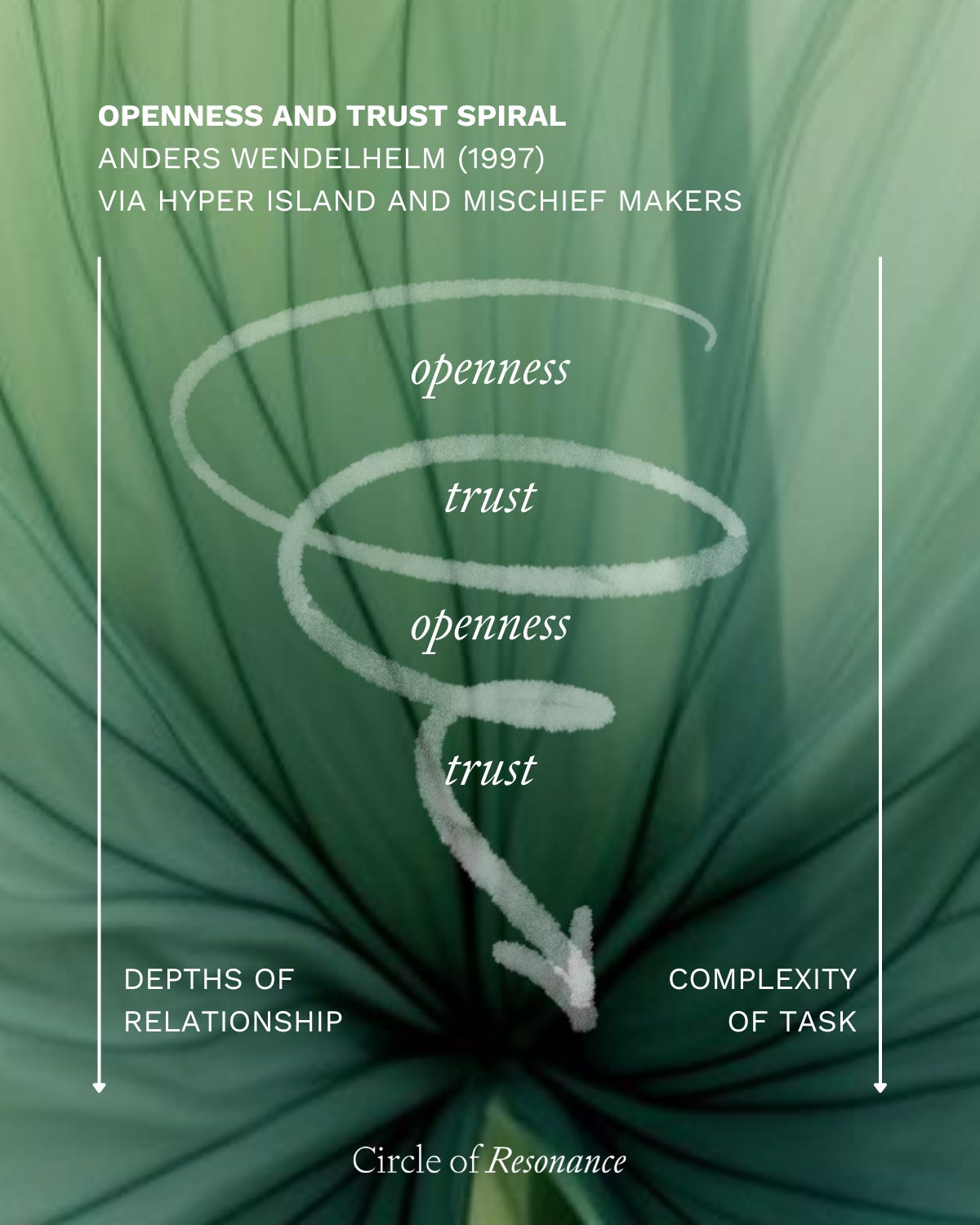In the yogic tradition, Satya—truthfulness—is one of the five yamas or ethical foundations for living. But its wisdom stretches beyond yoga mats and meditation halls. In today's organisations, communities, and leadership challenges, Satya offers a profound guide: not just to tell the truth, but to live in truth, hear the truth, and recognise that many truths can coexist. In an era marked by polarisation, misinformation, and performative transparency, this timeless principle is more vital than ever.
The Three Facets of Satya
At its heart, Satya has three dimensions:
Telling the truth as you know it
Being willing to hear another's truth
Understanding that many things can be true at once
It's a call to radical honesty—but one that never abandons compassion. Truth in this framework isn't a weapon but a bridge. It demands not only clarity but humility.
Modern leadership often stops at the first facet: "Be honest." But Satya asks us to go further. Are you listening with curiosity to truths different from your own? Are you holding space for complexity, ambiguity, and even contradiction? That's where the deeper work lies.
Truth and Non-Violence: A Sacred Partnership
Crucially, Satya never exists in isolation—it must never conflict with ahimsa or non-harming. This is where many leadership models of "radical candor" falter. Candor, without compassion, becomes cruel. Truth without care can damage trust instead of deepening it.
Are you sharing with the listener’s needs, state of mind and context in mind, or are you sending? What is the intention behind your message?
To practice Satya in leadership means embracing truth and kindness—choosing to speak up when silence breeds harm or would otherwise withhold a valuable gift. But doing so in a way that preserves the dignity of others. It's the art of being clear, not brutal.
Truth Is Relational
Truth isn't an object we possess. It's a living, relational quality. The Buddhist and Jain traditions remind us that truth is often contextual and multifaceted. What feels true from one vantage point may look very different from another. Leaders who grasp this develop flexibility, humility, and wisdom.
This doesn't mean truth is relative or meaningless—it means truth becomes richer when informed by multiple perspectives. Listening becomes an ethical act. Inclusive decision-making—where diverse voices shape the outcome—is not just fair; it is how we get closer to capital-T Truth.
Openness and the Spiral of Trust
Openness is Satya in motion. It's more than simply answering truthfully when prompted—it's about intentionally sharing your thoughts, feelings, and decisions. Trust can't be demanded, but it can be inspired by modeling genuine openness. This creates a powerful openness–trust spiral1: when one person shares candidly, it builds trust, which invites more openness, deepening trust even further.
This spiral is the foundation of psychological safety—a culture where people feel secure enough to speak, disagree, and admit mistakes. And it's a key driver of innovation and resilience. In truth-telling environments, feedback becomes a gift, not a threat.
But opening up can feel risky. Leaders must model this first by sharing uncertainties, acknowledging their limits, and inviting feedback. This vulnerability is not weakness—it's the soil in which trust grows.
Satya at Work: From Philosophy to Practice
Bringing Satya into modern leadership requires structures and habits that nurture truth:
Radical transparency, demands open access to information and encourages dissent. But it only works if paired with emotional intelligence and ethical boundaries.
Ethical leadership requires alignment between values and actions. Its truth lived out consistently—not just spoken but demonstrated.
Consent-based decision-making ensures that no one's truth is bulldozed for the sake of speed. Resistance is acknowledged and incorporated, not ignored.
And always, we can ask: is it kind? Is it timely? Is it necessary? Does it improve the silence?
The Courage to Speak—and Hear—Truth
Sometimes, truth means calling out uncomfortable realities. Other times, it means listening deeply to someone else's pain or perspective. Often, it's holding the tension that multiple truths might be valid—yours and theirs, side by side.
Truthfulness isn't about having the final word. It's about creating the conditions that allow a shared understanding to emerge.
As leaders, our commitment to Satya is not just moral. It's strategic. Transparent, truth-honoring cultures have higher engagement, stronger trust, and better long-term outcomes. But more than that, they're more human.
And in this moment of global disruption and uncertainty, humanity might be the most powerful leadership tool we have.
Truthfulness Begins With Being True to Yourself
We often think of truthfulness as something outward — being honest with others, speaking and acting with integrity. But real honesty starts within. Before we can tell the truth to the world, we have to stop lying to ourselves.
We stay in relationships, jobs, and versions of ourselves that feel safe but no longer fit. We pretend it's fine — because it's familiar.
Being true to yourself means showing up fully for the life that’s calling you. It means facing your fears, contradictions, and deeper motivations — and asking honestly: Am I living in alignment with what I value? Or am I hiding in what’s comfortable? Where am I holding back?
Truthfulness is also about bringing your gifts forward — not someday, but now. Refuse to let fear or comfort keep you caged. I once wrote about a Tlaloc story — a little snake who learned to fly. That’s what this is. Leaving the cage, even when it’s scary. Because the reward is freedom. Because the reward is fully becoming who you already are – yourself.
The CoR Thrive group journey is now closed until September 2025, but if this speaks to something stirring in you, I have a few 1:1 coaching spots open this summer. Reach out if you’re ready to explore what it means to be deeply, radically true to yourself.
Graziella
Anders Wendelheim (1997) Effectiveness and process in experiential group learning: comparing a process-directive encounter group (PEG) and a self-directive study group (SSG).
https://www.diva-portal.org/smash/record.jsf?pid=diva2%3A438847&dswid=1049
found at Hyper Island and Mischief Makers






